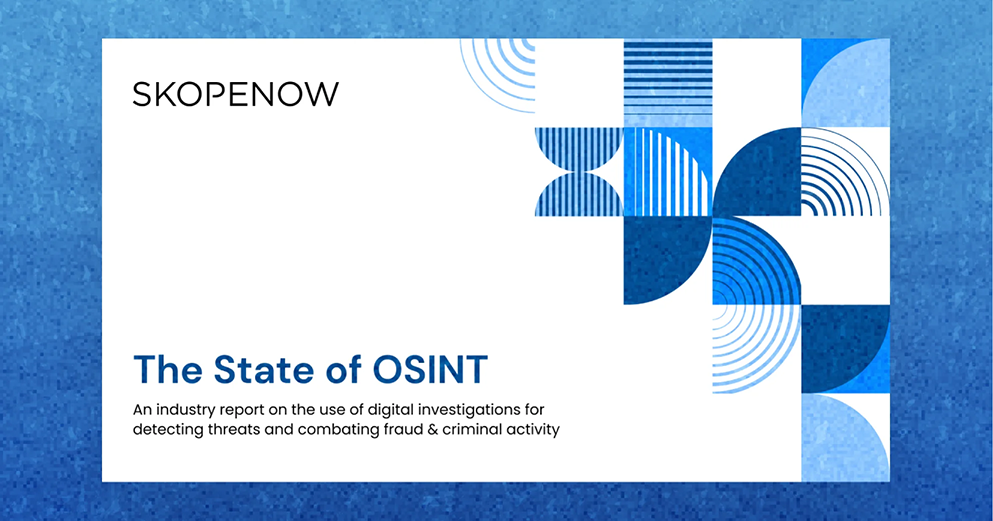August 22, 2023
Lost in Translation: The Right Human Touch in OSINT

Rob Douglas
CEO
As digital fingerprints stretch across cultures and geographies, they often come marked with linguistic stamps – from tweets in Tamil to blog posts in Bulgarian and online marketplace listings in Spanish. With targets sharing information in various languages and dialects, open-source intelligence (OSINT) investigators are tasked with collecting and accurately interpreting this multilingual data. It is more critical than ever to examine and acknowledge the importance of language in OSINT, the limitations of relying solely on automated translation, and the role of human translators in ensuring that the intelligence generated is accurate and reliable.
Navigating the Multilingual Landscape
There are over 7,000 known languages actively spoken around the world. Analysts and investigators face a significant challenge when collecting content related to an investigation online due to this linguistic diversity. To address this complexity, on the surface, automated translation tools seem like a time-saving solution, providing an efficient way to interpret content in different languages while promising fast insights and broad accessibility. However, automated translation has its limits.
Languages are not just sets of words; they carry the weight of their respective histories, cultures, and contexts. Subtle aspects of language, such as idioms or specific phrasing, can be rich in meaning. While humans might grasp these nuances intuitively, machines find them more elusive. A machine might technically translate a sentence correctly but miss its cultural or historical significance. The result? A loss in the depth and richness of the original content. With the standard of translation technology currently available, navigating the online multilingual landscape still requires a mix of advanced tools and human insight.
Understanding the Limitations of Automated Translation in OSINT
Automated translations can be sufficient for casual online browsing or understanding the general theme of a foreign article. However, these tools can fall short when it comes to OSINT, where precision and deeper understanding is vital. Translated results from automated solutions are often subpar, which presents significant risks, such as making resource allocation decisions based on faulty insights from poorly translated content. Separate but related, during legal trials, if an opposing side can call into question the reliability of translated material that has been submitted as evidence, that can result in the collapse of a case. In contrast, a competent human translator can provide context, explanations, and justifications for their translation choices, bolstering the credibility of evidence by offering rebuttals from trustworthy expert witnesses. OSINT doesn't just involve collecting data; it's about deriving accurate and actionable insights from that data to generate value.
To mitigate the limitations of automated tools, some OSINT platforms now incorporate human curation services, where analysts manually translate content for bulletins and reports on emerging issues. While these analysts can deliver highly skilled human translation services, they introduce yet another risk: their reports may not cover subjects of particular importance for a given customer organization. This is where an internal, human resource working directly for an organization’s intelligence or investigation team can deliver the quality of an external curation service, but often much faster and with greater relevance, ensuring the content that matters is translated exactly when it is needed.
The Need for Accuracy in Intelligence Translation
In intelligence work, details are crucial. Each word, phrase, and variation in meaning can significantly impact an investigation or analysis. Misunderstanding a piece of information can derail an investigation, change an established story, or result in incorrect conclusions. In OSINT, accuracy isn't optional; it's essential.
Machine translation systems, despite their advancements, work within a set of parameters. They identify patterns and follow specific rules. However, with its array of idioms, metaphors, and cultural allusions, human language sometimes doesn't fit neatly into rule-based systems. Language constantly evolves and new words emerge while others gain new meanings.
Ideally, internal human translators play a critical role here. Their work goes beyond mere translation; they interpret content based on the relevant application. They ensure that translations retain the original's emotional, cultural, and contextual nuances. When an intelligence analyst reviews a human-translated report, they receive not just raw information, but also insights informed by pertinent cultural and historical details.
Additionally, internal human translators can identify and convey subtle differences in meaning and detect elements like sarcasm or irony—areas where machines can falter. Given the high stakes in intelligence, where a single error can have widespread consequences, the expertise of a human translator becomes indispensable.
Enhancing Intelligence Through Human-Machine Partnerships
Currently, detailed comprehension, context awareness, and subtleties in language interpretation remain predominantly human strengths.
While we envision an eventual world where AI translation capabilities reach parity with expert human accuracy, some cultural and linguistic intricacies may always remain beyond reach. Given the potential gaps, combining machine efficiency with human intuition is a logical step forward. The objective isn't to replace one with the other, but to establish a bridge where each amplifies the other's strengths.
Vast data, by itself, doesn't equate to actionable intelligence. Once machines have collated this information, the crucial role of the human analyst starts. Analysts parse, provide context, interpret, and refine the data, ensuring the resultant intelligence is precise and relevant. This blend of machine-enabled breadth and human-guided depth will likely define OSINT's future trajectory.
At Skopenow, we understand the importance of staying up-to-date on the latest developments, trends, and techniques in OSINT. Our solutions empower organizations to more effectively and efficiently gather and analyze open-source information, identify trends and patterns in the data, and detect emerging threats and risks. Start unlocking the power of open-source intelligence with a free trial today: www.skopenow.com/try.


